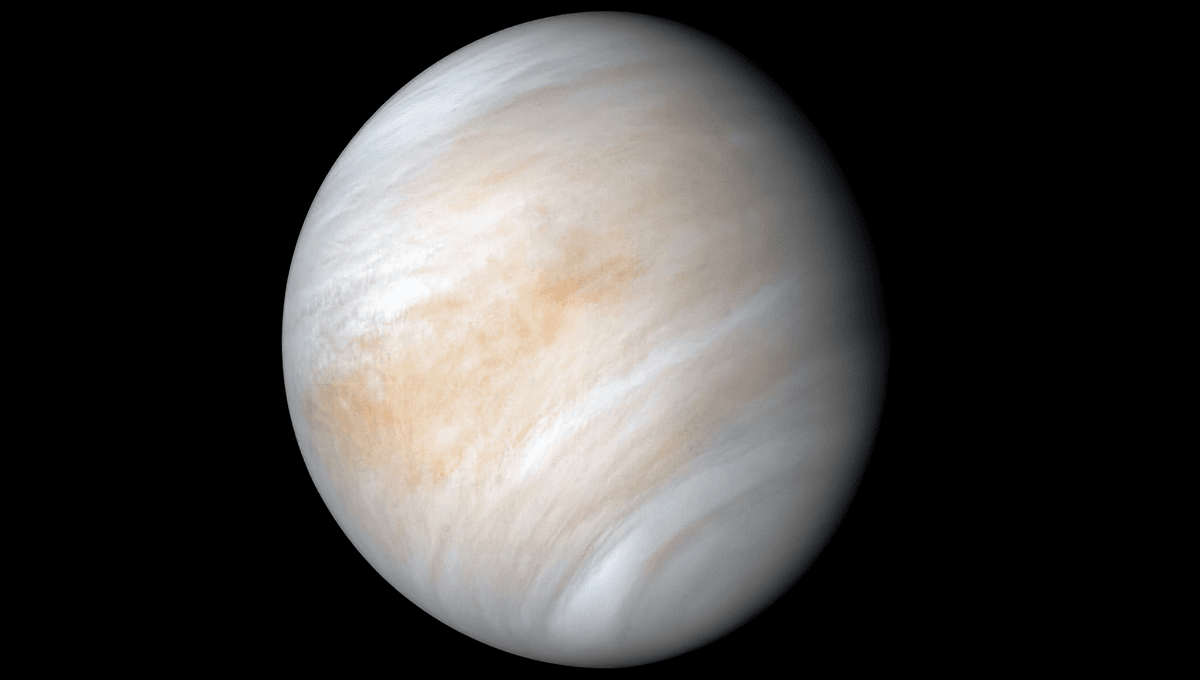
Space probes to Venus have detected flashes of light in its clouds that were widely assumed to be lightning. However, a reassessment suggests they are more likely to represent tiny pieces of space dust burning up in the thick Venusian atmosphere.
From the point of view of those seeking to explore the second planet, this is very much a good news/bad news story. On the positive side, it makes future missions considerably safer – if anything can be considered safe in the hell that is Venus. However, for those still holding out hope of life within the Venusian clouds, lightning was proposed as the spark that might make it possible. Without it, such optimism suffers yet another blow.
Arizona State University student Claire Blaske counted the number of flashes detected in Venus’s atmosphere, both by the Akatsuki orbiter and an Earthly telescope, and compared this figure with how many meteorites we would expect. Since the number of objects hitting the atmospheres of Venus and Earth are probably quite similar, the main challenge here was to work out how large an impactor needs to be for us to see its trail.
Blaske estimated there are between 10,000 and 100,000 annual flashes bright enough for us to detect if we were watching Venus the whole time. Allowing for the greater speed with which Venus orbits the Sun, Blaske and co-authors concluded it was quite credible that there were enough appropriately sized meteors to account for all those we see.
Although the surface of Venus is incompatible with life, or even a sustained robotic presence, at 50 to 70 kilometers (30 to 45 miles) up, conditions are quite balmy. This has led to proposals for future cloud cities.
More immediately, future missions might float at these heights to conduct research, carried by the rapid winds to circumnavigate the planet every five to seven days. Lightning could pose a threat to such plans, requiring expensive protection.
On the other hand, some have argued that these same temperate conditions could allow life to survive in the clouds. For that to happen, a source of molecular nutrients may be necessary. Lightning, which fixes some of Earth’s nitrogen to biologically usable forms, could provide the energy to make that possible.
Although such ideas are generally considered far-fetched, the excitement around the possible discovery of phosphine in Venus’s atmosphere shows not everyone abandoned hope of a living Venus when the first missions revealed its ferocious temperatures.
The flashes have been observed at a wavelength of 777 nanometers, associated with excited oxygen. Lightning can energize oxygen to produce light at this wavelength, but previous studies expected less than 1 percent of the optical energy produced by a burning meteor would be in this part of the spectrum. If so, it would take a very large meteorite for us to see anything in this range.
However, Blaske and co-authors make the case that 5 to 10 percent of the energy released on Venus would be near this wavelength, allowing smaller meteors to account for what we see.
The idea that Venus has lightning does not rest on flashes of light alone. Before they failed under the intense heat at the surface of Venus landers detected static at 10 to 80 Hertz. On Earth, lightning is a common trigger for similar interference. However, the connection between the static and the flashes has not been established.
If the flashes are from meteors, most occur too high in the atmosphere to pose a threat to aerial missions.
The study is published in the Journal of Geophysical Research: Planets.
Source Link: Flashes Of Light From Venus May Be Meteors, Not Lightning Bolts